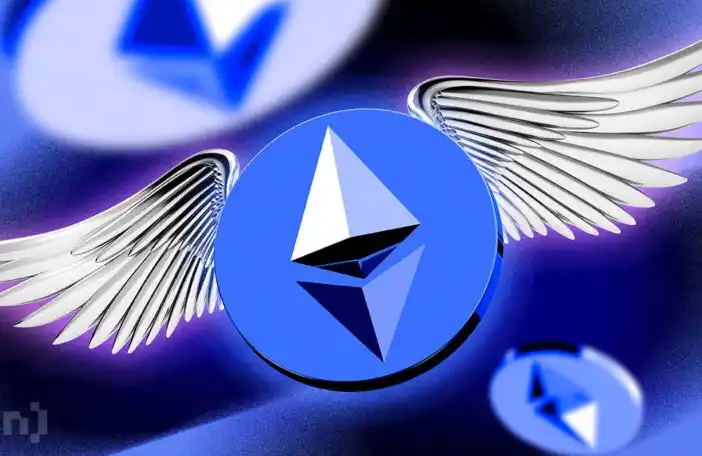Original author: Kevin
Currently, the popularity of modular blockchain is not decreasing, and the reason for its birth comes from the limitations and defects of monolithic chain.
What is "modular"?
In software engineering development, "modularization" refers to the decoupling of code, so that the functions of each module are independent, the coupling between modules is low, and the purpose of module reuse is achieved.
The essence of modularization is a division of tasks, and programs composed of different modules can achieve different functions.
For the blockchain, modularization is an optimization of the monolithic blockchain architecture, and the functions of each part of the blockchain are layered on the system architecture; modular chains often only need Realize the functions of a certain layer, and other functions are provided by chains of other layers.
In this way, there is no need to include all layers of chains like a monolithic chain Function.
The advantage of modularization is to increase the degree of decentralization of the blockchain and improve the throughput and capacity of the blockchain.
So what is the difference between monolithic chain and modular chain?
First of all, for monolithic, all functions and responsibilities include:
Consensus: All nodes agree on transactions and their ordering.
Data Availability: Make sure data is storable, verifiable, and usable.
Execute: Handle state changes.
Settlement: verify the status of the execution layer and resolve disputes, and be responsible for the bridge of assets cross-chain.
In the monolithic chain, each node in the network needs to handle everything from data verification to transaction execution to status update.
The advantage of this is high security, all transaction data is stored in the archive node, the light node needs to query the transaction status from the full node, There is no third-party trust assumption, and all transaction states are kept in black boxes.
But it also brings limitations. The core of the single-chip chain bottleneck lies in the continuous accumulation of data on the chain. In the Impossible Triangle, due to the demand for DA, the scalability of the monolithic chain is limited.
In the future, when web3 becomes the public choice, in order to ensure the possibility of mass adoption, the monolithic chain needs to be transformed into a modular chain to break the impossible triangle.
Rollup is a scaling solution that separates the execution layer. The calculation is processed off-chain, and the packaged data is finally uploaded. This can indeed increase the throughput of the network, but introduces a trust assumption (op Rollup).
The throughput of Rollup increases linearly, and the larger the transaction volume, the more data needs to be broadcast to the main network. In the end, the throughput bottleneck of Rollup still falls on the data bandwidth of the underlying network.
The bottleneck still falls on the data bandwidth of the underlying network.
Sharding is the final solution proposed by Ethereum to solve this bottleneck.
In the modular chain, four functional layers are disassembled, and these functions are performed by different network participants.
The advantage of this is decentralization: by separating the DA layer, reducing the hardware requirements for nodes and increasing the number of nodes, improving the degree of network decentralization without introducing additional trust assumptions.
Simplified chain deployment: By utilizing a modular design, the start-up cost of a new blockchain and the development cost of the design architecture are reduced.
However, there are risks, the first is security: unlike monolithic blockchains, entrusting the DA layer to a third party may bring risks, and it cannot be as Single-chip chains can be trusted to ensure security.
The second is complexity: In the process of separating the DA layer, the modular chain needs to ensure the trust assumption (fraud proof and validity proof) and keep the work between different chains smooth. This design brings higher complexity . In the absence of market testing, complex designs bring higher risks.
Monolithic chains do all the work within one protocol, making them self-sufficient (but also inefficient). Even if there is a downtime (solana) due to overload, the outsourced function cannot be used.
The modular chain is only a part of the protocol and must be combined with other chains to function.
< /p>
Select Whether it is a monolithic chain or a modular chain, as far as the current situation is concerned, the characteristics of the application need to be considered. For example, DeFi applications prioritize security, so choosing a monolithic chain can provide the best security. However, if an application prioritizes throughput and execution speed, then modular chaining may be a better fit. Of course, if the modular chain can optimize and design a more secure network architecture, then it is foreseeable that the modular chain will be the mainstream choice in the future.
Original link
Welcome to join the official BlockBeats community:
Telegram Subscription Group: https://t.me/theblockbeats
Telegram Discussion Group: https://t.me/BlockBeats_App
Official Twitter Account: https://twitter.com/BlockBeatsAsia
 Forum
Forum OPRR
OPRR Finance
Finance
 Specials
Specials
 On-chain Eco
On-chain Eco
 Entry
Entry
 Podcasts
Podcasts
 Data
Data

 Summarized by AI
Summarized by AI







